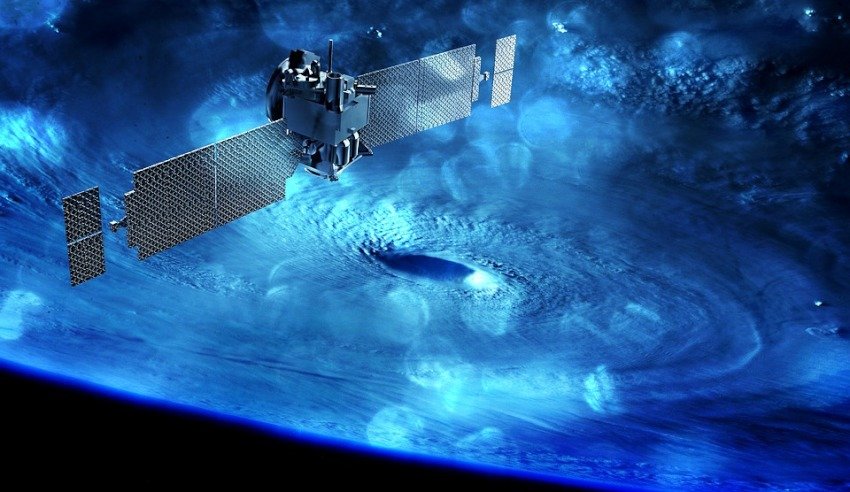"Space, I think [it] is fair to say, is the future, and that's really what it means. It's the future of innovation, it's the future of business, it's the future of the human race. It's something that we've always looked up, we've always seen something, that is bigger than us, we've always wondered what that's like, and so back in the '60s we had that opportunity to actually touch the heavens and then go and start to explore new worlds," said Karl Rodrigues, executive director of international and national engagement at the Australian Space Agency, setting the launch platform for the nation's ambitions in space.
However, the nation's engagement in the global space race heralds back to the earliest days of the Cold War and the competition that began with Sputnik and ended with Neil Armstrong striding boldly across the lunar surface.
Fast forward several decades and the world has seen the rise of private space pioneers, like SpaceX, Blue Origin and Virgin Galactic, challenging the titans of NASA, Boeing, Lockheed and the like, each seeking to leverage the immense commercial opportunities provided by the ever increasing ease at which commercial, defence and, now, individuals can and do interact with the space domain.
Rodrigues said the Australian Space Agency was designed "to grow and transform a globally respected sector here in Australia that lifts the entire economy, and we do that through strong international and national engagement, and in doing so we hope to inspire and better the lives of all Australians, that's what we're here to do".
However, while the players have evolved and changed, the objective and the game that is the space race remains the same. Australia's long-standing relationship with organisations like NASA, the European Space Agency and companies like Boeing, Lockheed Martin and Northrop Grumman, combined with the globally recognised position as a world leader in the engineering, research and development fields, the emerging arenas of geospatial imaging, advanced satellite communications, machine learning, space engineering and manufacturing and operations, all provide opportunities for Australia to position itself as a world leader.
"Our scientists are highly respected throughout all of the research institutions and all of the agencies around the world, but one of the things that we have been missing is this co-ordination point, and that's one of the purposes of the agency being brought into existence," Rodrigues said.
"Australia is in fact leading the world as some key unique talents in a number of different areas, though some of those areas are communications, ground stations and telecommunication satellites etc, those sorts of things, space situational awareness," he said, identifying key areas for Australian industry to focus on.
Merely having the scientific and research expertise is not enough to guarantee success in the new space race. The growing interconnectedness of industry, ironically powered by space born technologies, plays a pivotal role in enhancing Australia's capability as an industrial partner.
The ASA serves a powerful role in breaking down barriers and helping to facilitate industrial, research and political co-operation between industry, research institutions and governments from around the world. ASA has also drawn on its international collaboration to work out what model works best for Australia and the objectives identified by the government.
"We have looked to other agencies in terms of how the model should work, and obviously there's the big guys like NASA and ISA. Japan's is fantastic, it's very research focused etc, and then you've got the whole swathe of country agencies that are coming up, and each one of them has a different sort of model," Rodrigues said.
"So, for example, the UK Space Agency I guess is probably the closest one that we're trying to look at because it as well is very industry focused. We realised that we aren't going to be a NASA but we are going to be very industry focused, and then we can try and add that value through that sort of dimension," he added, explaining the strategy behind focusing on Australia's areas of natural comparative advantage.
ASA and Australian companies like primordial Australian space company Electro Optic Systems (EOS), Saber Astronautics, Kleos, Gilmour Technologies, Myriota and Fleet have established themselves as both domestic and world beaters in their respective fields, through the signing of MoUs, statements of intent and collaboration agreements highlighting the role both industry and government can play in supporting the broader national space agenda.
As part of the 2018-19 budget, the government is investing $41 million over four years to establish and operate Australia’s first national space agency. The government is also investing more than $260 million to develop world-leading core satellite infrastructure and technologies, including better GPS for Australian business and regional Australians, and improved access to satellite imagery.
The Space Agency’s focus will be on fostering international space partnerships and opening the door for local businesses to compete in the global space economy, helping to drive job growth, with initial priorities including:
- Communications technologies, services and ground stations;
- Space situational awareness and debris monitoring;
- Positioning, navigation and timing infrastructure;
- Earth observation services;
- Research and development;
- Remote asset management; and
- Developing a strategy to position Australia as an international leader in specialised space capabilities.
"Given our current size, given our GDP ... we're punching a little bit below our weight. So, the opportunity for us to grow and capture a significant size of that growth over the next 25 years is phenomenal, and it's in those exciting fields of traditional space technologies that everyone thinks about when they talk about space, but it's broader than that," Rodrigues said, highlighting the immense growth potential Australia faces in the domestic and global space ecosystem.
If you would like to stay updated with all the latest market intelligence and analysis from the local space industry, you can subscribe to Space Connect here.

